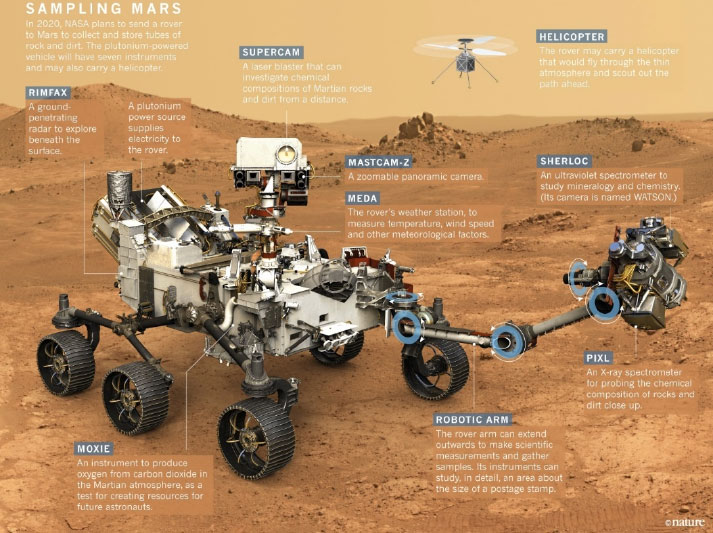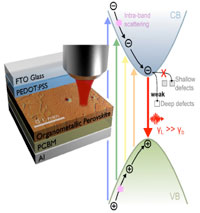Remote Sensing Applications
We design and field new types of remote sensing instruments whose aim is to detect optical signatures of importance in proliferation detection and other defense missions such as battlefield threats and intelligence gathering
Contact Us
- Group Leader (Acting)
- Harshini Mukundan
- Deputy Group Leader (Acting)
- Kristy Nowak-Lovato
- Team Leader
- Juan Duque
- Group Office
- (505) 667-7121

July 31st 2020: Perseverance Rover, nicknamed Percy, lifted off at 7:50 a.m. EDT (1150 GMT) on a United Launch Alliance Atlas V rocket from Space Launch Complex 41 at Cape Canaveral Air Force Station in Florida. Percy carries the LANL-built SuperCam, which examines rocks and soils with a camera, laser and spectrometers to seek organic compounds that could be related to past life on Mars. It can identify the chemical and mineral makeup of targets as small as a pencil point from a distance of more than 20 feet (7 meters), are safely on their way to Mars, with a timely launch despite many hurdles including the COVID-19 pandemic. The mission is scheduled to land in Mars on Feb 18th, 2021.
This team develops remote sensing technologies and algorithms
Theoretical research is aimed at the development of detection algorithms (for gas chemicals, solid materials, and others) to extract signals from high levels of background clutter.
Members of the Remote Sensing Application Team, at left, Juan Duque, Nick Parra-Vasquez, Blake Nolan (Sigma-2), Jared Crochet (not pictured), Kevin Mitchell (not pictured) were recipients of a 2018 Small Team Distinguished performance award for their work in detection of threat materials.

Our recent investigations have discovered the physical origin of why solution-processed, large-grain hybrid (organic/inorganic) perovskites give rise to solar cells with exceptional (~18%) power conversion efficiencies.
In this key finding, C-PCS researchers have found that charge carriers created by light are not free electrons and holes, but manifest themselves as “large” polarons, a much heavier entity resulting from long-range interactions between photo-excited charges and polar molecules of the hybrid perovskite lattice. The large polaron has interesting physical properties that result an effective “shielding” from optical phonons and electronic impurities, which are otherwise detrimental for efficient transport in semiconducting materials.
As a result, current-killing charge recombination is much slower than charge transfer, making charge collection in the device much more efficient. This result is consistent with the superior transport properties of hybrid-perovskites materials as compared to other solution-processed materials, and explains the far superior solar cell performance.

A schematic of the electronic bands in the hybrid perovskite material with relevant relaxation processes. Most important, due to polaron formation, the rate of charge recombination in the material is much less than the rate of charge extraction in a device.





